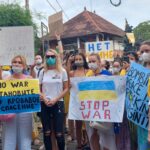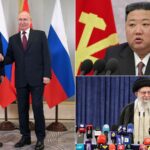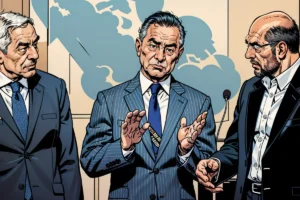For decades, Myanmar’s generals have been convinced that they are under attack from foreign intelligence agencies, which they believe operate secretly within the country and around its borders to undermine military rule, encourage internal unrest and sow confusion among the population.
Given this conviction, it would not have surprised any member of the current junta to read an article republished in Eurasia Review earlier this month, claiming that “Western intelligence agencies are fuelling an armed rebellion against the Myanmarese [sic] generals in power from the hideouts in Thailand”.
If true, this would be an important development. However, the claim warrants closer inspection.
There is no doubt that successive governments in Myanmar have been the subject of foreign intelligence interest. During the 1950s, for example, the CIA supported Nationalist Chinese (KMT) remnants in northern Myanmar and, during the 1970s and 1980s, Beijing secretly provided aid to Burma Communist Party guerrillas.
Following the 1962 military coup, the CIA supported former Prime Minister U Nu’s exiled Parliamentary Democracy Party in its struggle against General Ne Win.
After the abortive 1988 uprising, the United States assisted the pro-democracy forces in various ways. For example, the Congress-backed National Endowment for Democracy gave funds and training to opposition groups based in Thailand. The US embassy in Yangon reportedly provided secret support to those opposed to the regime’s 2008 constitutional referendum.
Other embassies in Myanmar have been accused of conducting secret intelligence operations. Indeed, it has been suggested that the decision to move the country’s seat of government from Yangon to Naypyidaw in 2005 was prompted in part by the large number of foreign spies believed to reside in Yangon, and the vulnerability of the regime’s confidential communications to interception by local diplomatic missions.
It is highly unlikely that a foreign intelligence agency could provide substantial practical aid … without it becoming widely known. There are simply too many ways for such information to leak.
Naturally, firm evidence of espionage is hard to find, but there have been some credible reports. For example, it was revealed in 2020 that the United States had long been eavesdropping on official Myanmar communications through doctored cryptographic equipment. Also, according to the former National Security Agency contractor Edward Snowden, Australia and Singapore have been tapping an undersea cable connecting Europe to Asia and reading Myanmar traffic.
Since the 2021 military coup, there has been evidence to suggest that foreign intelligence agencies have taken a keen interest in Myanmar. This has been in part to follow political and military developments, and to assess their regional security implications. Such agencies have doubtless also been interested in the junta’s relations with China, Russia and India.
Whether or not Western intelligence agencies are actively assisting the opposition movement, however, let alone “fuelling an armed rebellion”, is a moot point.
To date, no foreign government has formally recognised the shadow National Unity Government (NUG), nor admitted to providing more than humanitarian assistance to those in Myanmar affected by the civil war. This has been despite pleas from the NUG and its armed wing, the People’s Defence Force (PDF), for practical help, including lethal aid.
As far as is known, no such help has yet been forthcoming.

There is scope, however, under the BURMA Act passed by Congress last year, for Washington to provide assistance to the opposition movement, “to establish an inclusive and representative democracy in Burma”. The Act cites “pro-democracy organisations”, including the PDF and ethnic armed organisations (EAOs), as possible recipients of “technical and non-lethal support”.
Despite the specific reference to “non-lethal” aid, the wording of the Act is broad enough to cover a range of military assistance short of arms and ammunition, possibly including the provision of body armour, uniforms, radars, medical equipment, and other supplies. It could also include training and intelligence.
Arguably, the provision of any support of this kind could be described as “fuelling an armed rebellion”.
There is always the possibility that lethal aid is already being provided secretly by one or more Western governments, either directly or through proxies. After all, that is what secret agencies do, and some are well practised in funnelling arms and other forms of clandestine assistance to groups such as the PDF and EAOs. Of course, this begs the question of why any government would want to do so, given assessments of the war’s uncertain outcome.
At present, however, there is no evidence of that happening. Experienced observers who have been monitoring the arms inventories of the PDF and EAOs have identified three main sources of their arms, and none of them include foreign governments. Instead, they identify the EAOs themselves, the Thai black market and the PDF’s own arms factories. There has also been a trickle of weapons from private groups of supporters overseas.
Another factor to consider is that, given the hydra-headed nature of the opposition movement in Myanmar, and its many loosely allied components, it is highly unlikely that a foreign intelligence agency could provide substantial practical aid to the PDF and other armed groups without it becoming widely known. There are simply too many ways for such information to leak and become public knowledge.
It is also relevant that the junta has made an effort to infiltrate the opposition movement. The generals are unlikely to remain ignorant for long of any secret channels of assistance, particularly if they included lethal aid, which is one of their greatest fears. Should the junta, or its partners such as China or Russia, hear of any clandestine support to the opposition movement, they would make it known very quickly. That too has not happened.
Whatever the real situation – and we remain ignorant of critical aspects of the civil war in Myanmar – it would seem prudent to await firm evidence before leaping to any conclusions, let alone making bold and unsubstantiated claims of shadowy intelligence relationships. Other pundits observing Myanmar have already fallen into this trap, to their cost.















